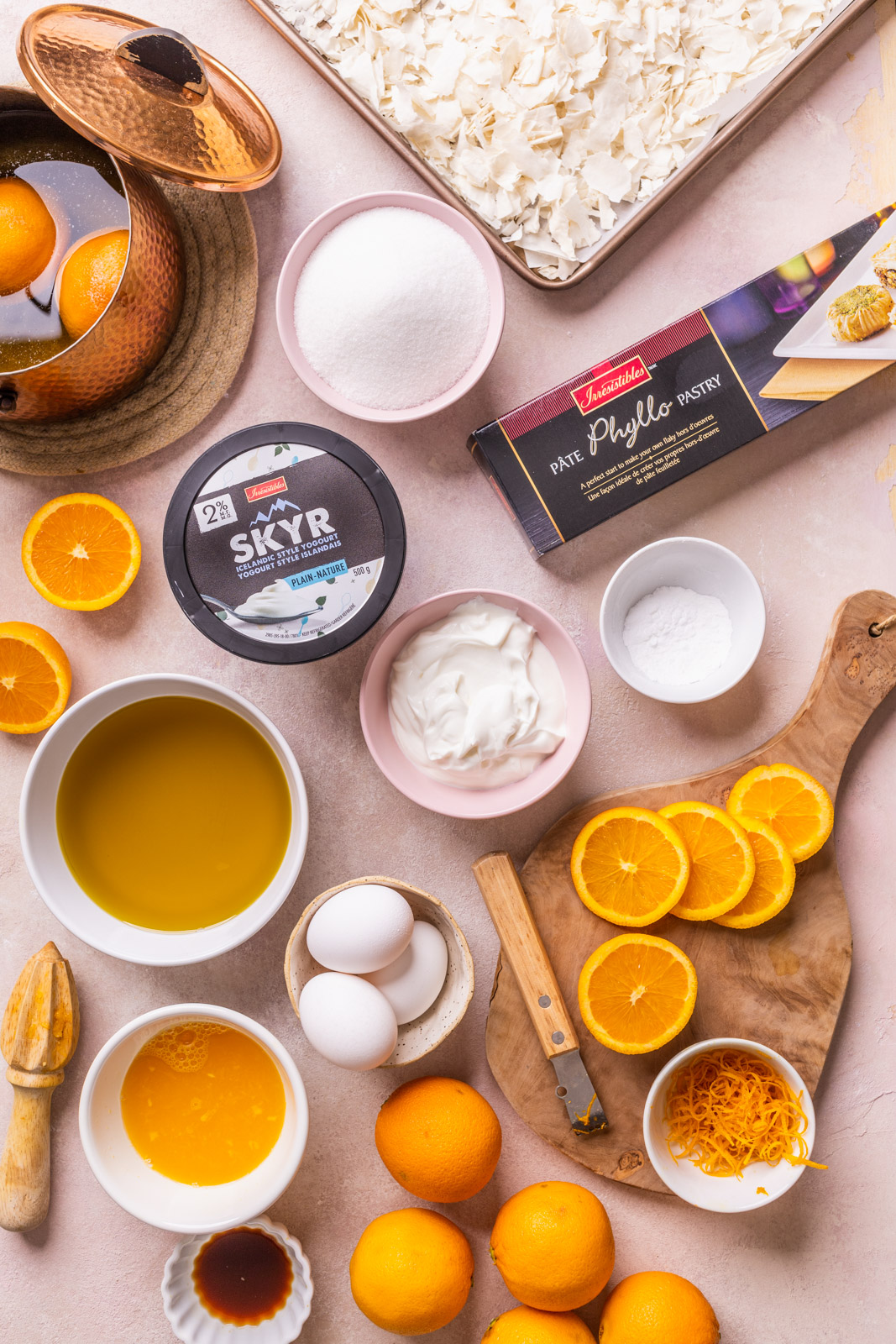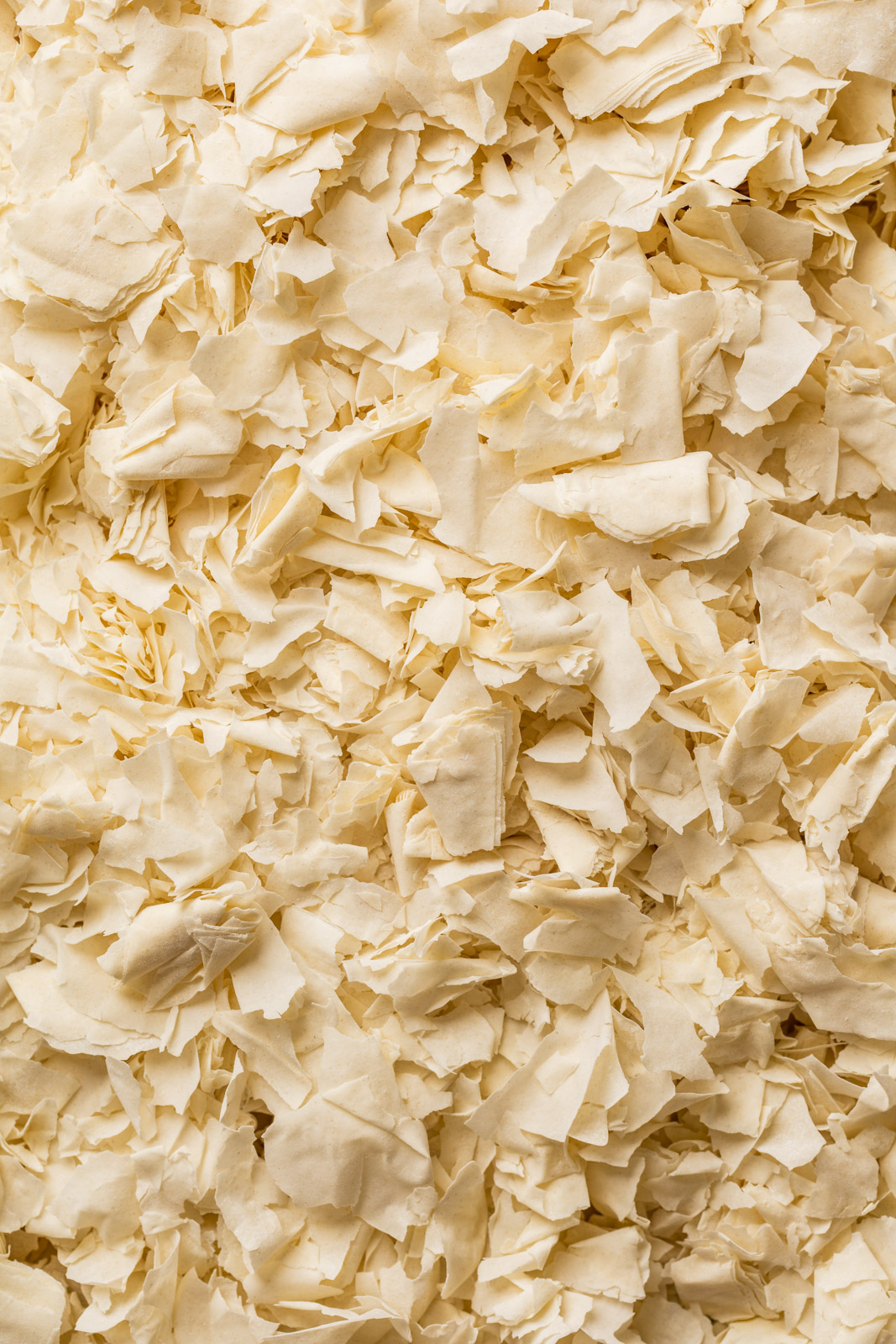Greek Orange Phyllo Cake (Portokalopita)
Updated 14th September 2023
This is a super simple Traditional Greek dessert in the σιροπιαστα/siropiasta category of desserts - meaning the ones soaked in some sort of luscious syrup aka my favorite of all the Greek desserts. Portokalopita or Greek Orange Phyllo Cake might sound like Tiropita and Spanakopita because of the ‘pita part that translates into pie and Portokali/πορτοκάλι is orange in Greek (spinach is spanaki and cheese is tiri - you get the idea) so it translates to orange pie. You might be thinking aren’t all Greek desserts syrup based? The very popular or well known ones might be but definitely not all. This may not be one you have ever had before but is worth trying if you like citrus based desserts. I love citrus based anything and am surprised I have never made this one before. It’s probably the easiest recipe out there its made in the food processor with no flour and no hand mixer required.

Why you will love this orange syrup cake
- The texture is sweet and sticky, custard-like and syrupy and delicious
- It’s a unique cake with a fun way to use phyllo dough
- It’s made in the food processor or blender
- It’s simple to make with simple pantry ingredients

What is Portokalopita?
Portokaopita is a Greek dessert or a Greek Orange cake made with oranges either whole or with the juice and flesh of oranges and orange zest. It’s also made with dried crumbled phyllo/filo and no need to add flour to this cake. It has a sticky sweet texture almost custard-like and full of orange flavour. It might seem like an unusual cake as it’s made with dehydrated (stale) crumbled phyllo sheets. Well apparently the background on this recipe came about so that any scraps of phyllo left behind from making savoury ‘pitas was not wasted. The result is the perfect no waste up-cycled dessert. I think this cake is good enough to make using a brand new pack of phyllo and obviously so did the rest of Greece - as there are dozens of recipes and versions out there of this cake. This one is my take on Akis Petritzikis recipe. I subbed out a few of the ingredients in his recipe and I also reduced the syrup ingredients as I thought his measurements were a bit too syrupy for my taste. I just loved his method of using two whole oranges in the recipe giving it some intense citrus flavour (this is the reason I use and recommend organic oranges for this recipe). I also loved that he makes his in the food processor or blender to break down the oranges into a paste allowing it to infuse the whole cake beautifully. It’s a wonderful recipe. The cake stays pretty light but custard like considering it’s soaked with a citrus syrup. Many serve this with ice cream or a citrus spoon sweet but I serve it on its own - it’s sweet enough on its own and just the perfect citrus based dessert!

Why do I have to boil the oranges?
The purpose of this step is to remove the bitterness from the white part of the rind – if you skip this (and there are some recipes that do) then the cake has the potential to be bitter. I have tried and tested making this cake without boiling them and it actually turned out really well without a trace of bitterness. It all depends on the oranges - the thinner the pith is the less bitterness you will get. Another option if you decide not to boil them is zesting the oranges, th peeling them and removing the pith and seeds of the oranges. Then just adding the flesh and zest to the food processor. The oranges add loads of flavour and add texture to this cake. I have yet to try this cake with just orange juice myself but I have had others try it with just the juice of the oranges - approx ½ cup of freshly squeezed orange juice.

What goes in Orange Cake
Simple pantry ingredients go into this orange cake:
- Whole fresh oranges I like to use organic
- Phyllo Dough / Fill Pastry (thawed, dried and shredded phyllo)
- Sugar
- Eggs
- Olive oil or any vegetable oil
- Greek yoghurt
- Baking powder & Baking Soda
- Vanilla Extract

How to make orange phyllo cake
- Boil oranges
- Make the syrup
- Shred the thawed and dried out phyllo pastry dough
- Place boiled oranges into food processor/blender along with the sugar and olive oil and blend until paste like.
- Add remaining ingredients except the phyllo into food processor and process until combined
- Combine the wet ingredients with the shredded phyllo in a large bowl folding gently until combined
- Pour cake batter into prepared baking pan and bake
- Once out of the oven ladle syrup over cake evenly and let rest at least 30 minutes before slicing.

Storage and Freezing
- STORAGE: Once baked and cooled it can keep well wrapped tight 3 days at room temperature or 1 week wrapped right in the fridge. I personally think it’s tastes best chilled the second and third day out when all the flavours have had time to meld and the cake is fully soaked and delicious!!
- FREEZING: Once cake is cooled, wrap it tight in a couple of layers of plastic wrap and freeze for 2-3 months. The flavours may be the same but the texture may be slightly different when frozen. Thaw overnight in the fridge.

More desserts you will love:
Recipe
Ingredients
For the syrup
- 2 cups granulated sugar
- 2 cups water
- 1 cinnamon stick (optional)
- Juice of 3 oranges (zest before juicing for the cake)
For the cake
- Zest of three oranges (zest the ones you will use for the syrup)
- 2 organic oranges, small to medium size
- One 454 g package phyllo dough, thawed
- 250 g / 1 cup sugar, granulated
- 250 g / 1 cup olive oil
- 250 g / 1 cup Plain Greek yogurt
- 1 teaspoon baking powder
- 1 teaspoon baking soda
- 1 teaspoon vanilla extract
- 3 large eggs, room temperature
- 1-2 oranges sliced to decorate (optional)
Directions
- Prepare PHYLLO/FILO PASTRY: Remove thawed phyllo from the package and place it on one large baking sheet or 2 medium ones lined with parchment paper. Break it up or tear into pieces and spread it around evenly on the baking sheet. Leave it to dry completely 1-2 hours or overnight or place in the oven and bake/dehydrate for approx 1/2-1 hour at 150-200°F, shaking the pan to redistribute the phyllo a few times. Once dry or dehydrated (allow to cool if you baked it) then use your hands to break/crumble it up into small pieces
- Prepare the SYRUP: Place the sugar, cinnamon stick if using and water in the pot and bring to a boil. Once it comes up to a boil remove from heat and stir to make sure the sugar is completely dissolved, stir in juice from the 3 oranges and set aside to cool completely.
- Prepare ORANGES: While the phyllo is drying place two organic oranges in a small saucepan and cover with cold water. Bring to boil and then lower the heat and simmer the oranges for 1 hour. Drain and once cool enough to handle cut in half, remove seeds from them, then place them in a food processor or blender. (see note about boiling oranges in recipe notes or above in post)
- Preheat your oven to 320 degrees F and lightly grease a 9x13 inch pan or two 9 inch cake pans
- Along with the oranges, add the olive oil, zest and the sugar and process/blend them together into a smooth paste. Then add the eggs, yoghurt and vanilla, baking powder and soda into the processor and process until fully combined. Transfer mixture to a large mixing bowl.
- Fold in the phyllo shreds/crumbles to the remaining wet ingredients a little at a time until fully incorporated but NOT over mixing. Then pour into the prepared pan and if you wanted to add some thinly sliced oranges decoratively over the top of batter now is the time then place in a preheated oven and bake until golden and set approx 40-45 minutes for 9x13 pan or until toothpick tester comes out clean. If using two 9 inch pans check doneness at 30-35 minutes
- Once done remove from oven and immediately ladle the cool syrup gently over the warm or hot cake. Let it rest for 30 minutes and then slice and serve. Serve it warm or chilled.
Recipe Notes
- Sweetness - this is a sweet syrupy cake. Use as much or as little syrup as you like. Sugar in the cake portion of the recipe can be cut to as little as ½-¾ cups of sugar if you prefer the cake slightly less sweet.
- Why do I have to boil the oranges? The purpose of this step is to remove the bitterness from the white part of the rind – if you skip this (and there are some recipes that do) then the cake could potentially be bitter. I have tested this recipe without boiling them and it actually turned out really well without a trace of bitterness. It all depends on the oranges - the thinner the pith, the less bitterness you will get. Another option if you decide not to boil them is peeling them and removing the pith and seeds of the oranges. The oranges add loads of flavour and add texture to this cake. I have yet to try this cake with just orange juice myself but I have had others try it with just the juice of the oranges - approx ½ cup of freshly squeezed orange juice.
- How to store this orange phyllo cake: Once baked it can kee

